I am organising– and attending– my first blind tasting for The Wine Connoisseurs– a club that I am part of. All of us are passionate about wines. Each month, one of us organises a wine dinner. This is our first blind tasting. We hold it at The Park hotel Bengaluru.
I end up choosing the pinot noir grape– its expressions across the world– and restrict it to the 2019 vintage. Then begins the hunt for bottles of 2019 pinot noir from different terroirs. Even though I am in the US, it is hard to find even a five-year-old vintage like 2019, particularly since I have restricted it to just the pinot noir grape. I end up driving to obscure stores all over California to get bottles. Total Wine, a huge retailer has only Australian and Argentinian pinot noir. To get Austrian and German pinot noirs, I have to drive to Roberts Market in Woodside, California. Fast forward….
I haul the wine back home and announce the event to my 10 TWC friends. Now, the true work begins. How does the expression of pinot noir change across continents? Is it possible to drink a pinot and say– this is from X country– if so, how? Although I know the names of the wines, I decide to do the tasting blind also. The day before the event, I send the 9 wine bottles to the hotel that is hosting us. I tell them to wrap up all the bottles and serve it to me blind. And then I start making notes. Below is what I sent to the group of ten people who were at the wine dinner.
- France: We are drinking a wine from the Saint Aubin climat, Prudhom & Fils premier cru – Les Frionnes, which refers to a minerally calcareous scree with a bit of Kimmeridgean clay. How to remember the aromas of this climat, which is described as garnet colour with “strawberry cheeks.” What does strawberry cheeks even mean?
- Germany: we are drinking a typical Spatburgunder called Zeireisen. This is what the winemaker said about their wines: “We produce muscular wines. Not sumo wrestlers but decathletes; smooth, elegant, strong, and athletic. Strength and balance is our target. We aim to achieve a balance between acidity, tannin, alcohol, and aroma.” How to identify this quality in what we are drinking?
- Italy: We are drinking a pinot nero, which grows in cooler Northern Italy in Franciacorte, Veneto, Fruili and Trentino-Alta Adige. The wine I have picked, Castelfeder, is from Alta Adige. These are soft elegant wines, with, among other things, scent of cloves– can we smell this and figure it out?
- Austria: Our wine is from the vineyard, Brundlmayer. There seems to be no earthly way we can pick out this particular Austrian wine, other than the fact that it is supposed to be austere.
- Oregon: The wine we are tasting from McMinnville Oregon. I searched on “how to spot oregon pinot noir in a blind tasting” and came across two words: cranberries and earth. I also learned that Oregon pinots were expensive relatively, because of the small parcels of land. We are drinking a Hyland Estates old vines pinot which costs around $60.
- New Zealand: We are drinking a pinot from Waipara Valley – in the North Canterbury region with savoury spicy notes– called The Bone Line. Grapes sit on the vines for a long time and so are allowed to develop aromas– so we need to keep our nose open for aromatic wines. Red and berry with spice and savoury notes.
- Argentina: Grows miniscule quantities of pinot noir, especially in the Mendoza region where our wine is from. The name of the wine, La Mascota ‘Unanime’, alludes to “unanimous” and refers to harmony in the wine. One wine description called it “chalky” and tight. So maybe the way to recognise this wine is that it is a tight wine.
- Chile: Pinots from here exude cherry, cranberry and strawberry flavours. The Kingston Family Tobiano is from their starting range of pinots and costs around $30. From there, pinot prices for this vineyard go up to $80.
- I found a Hidden Drop Australian for $9 at Total Wine. This will be a surprise for the group. Some may hate it. Some may love it.
So how was it for me? Even though I had purchased the wines, and did the research that I outline above, when I confronted 9 glasses of pinots– I froze, like in an exam. How do professional wine tasters assess hundreds of bottles? Each of us preferred different types of wines. I found that I loved new world pinots relative to old world ones. And I found that blind tasting is a lesson in overcoming preconceptions.
In my next column, I will write about all my learnings about smelling wines.
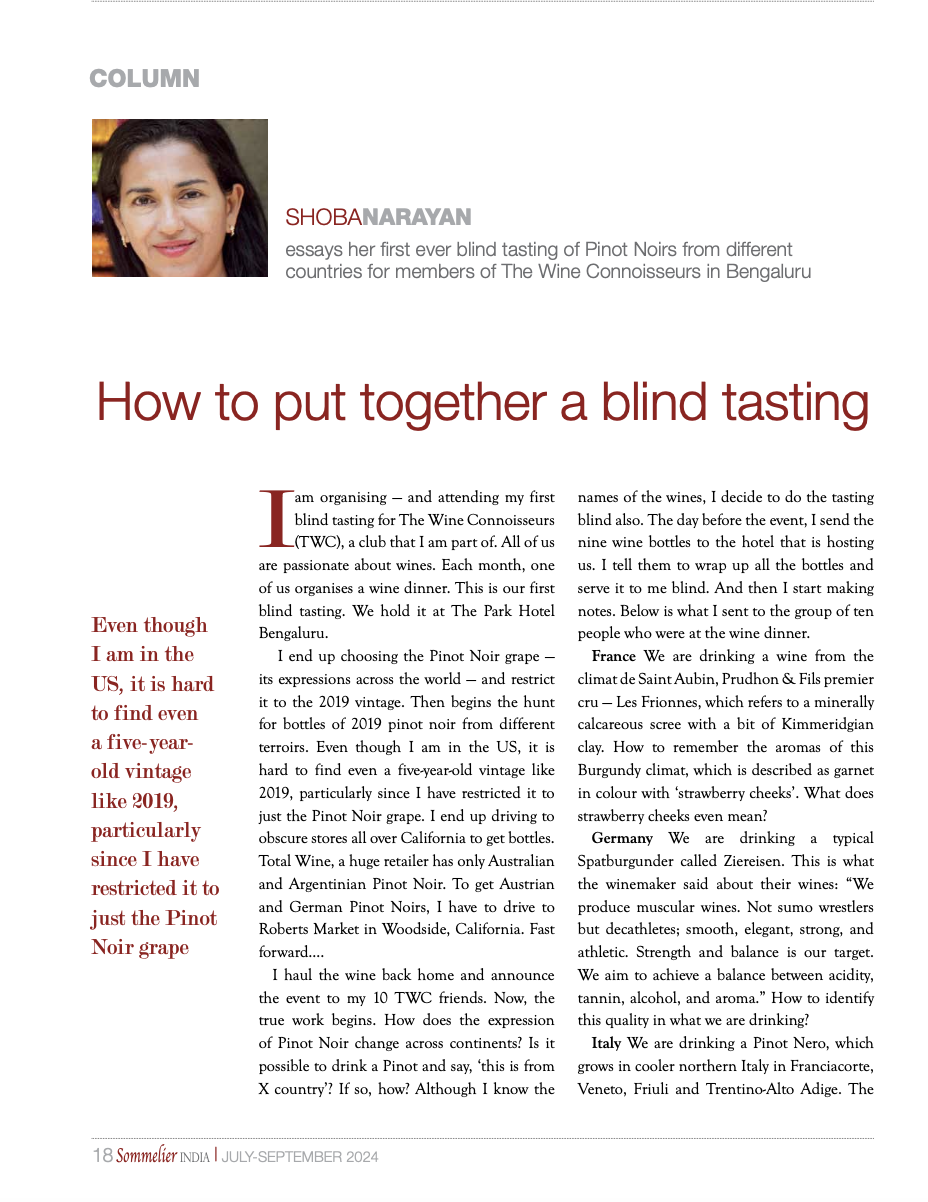
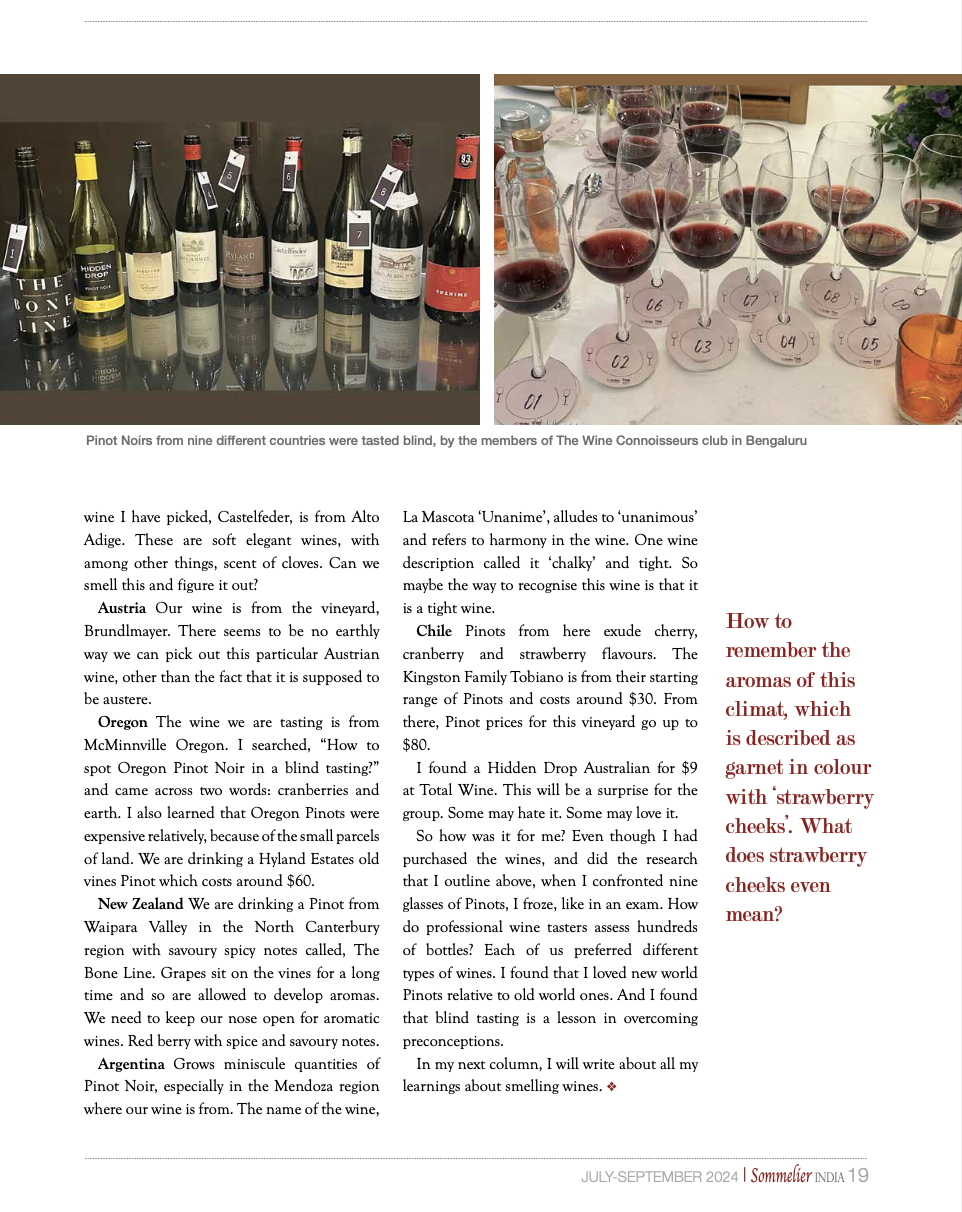
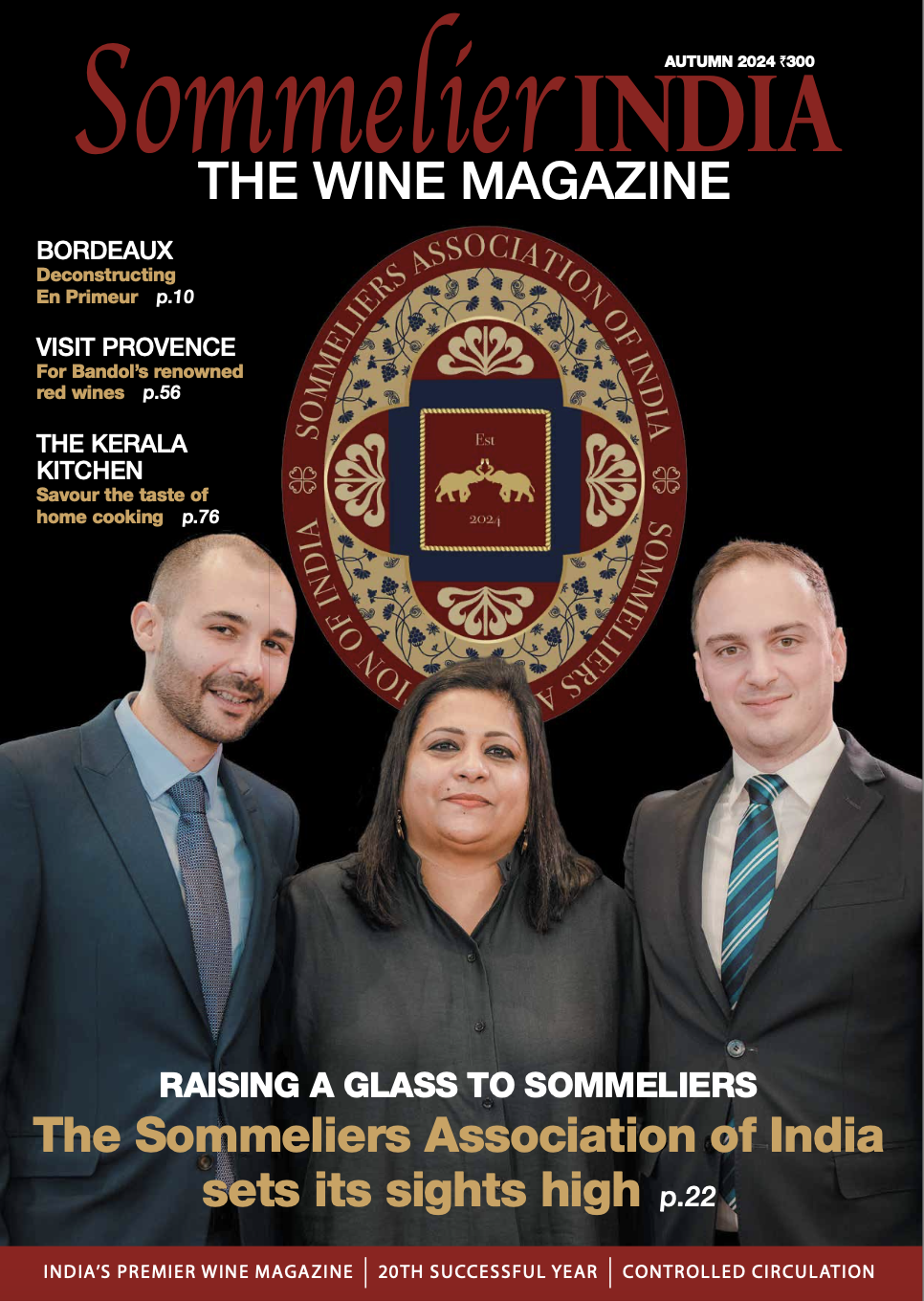
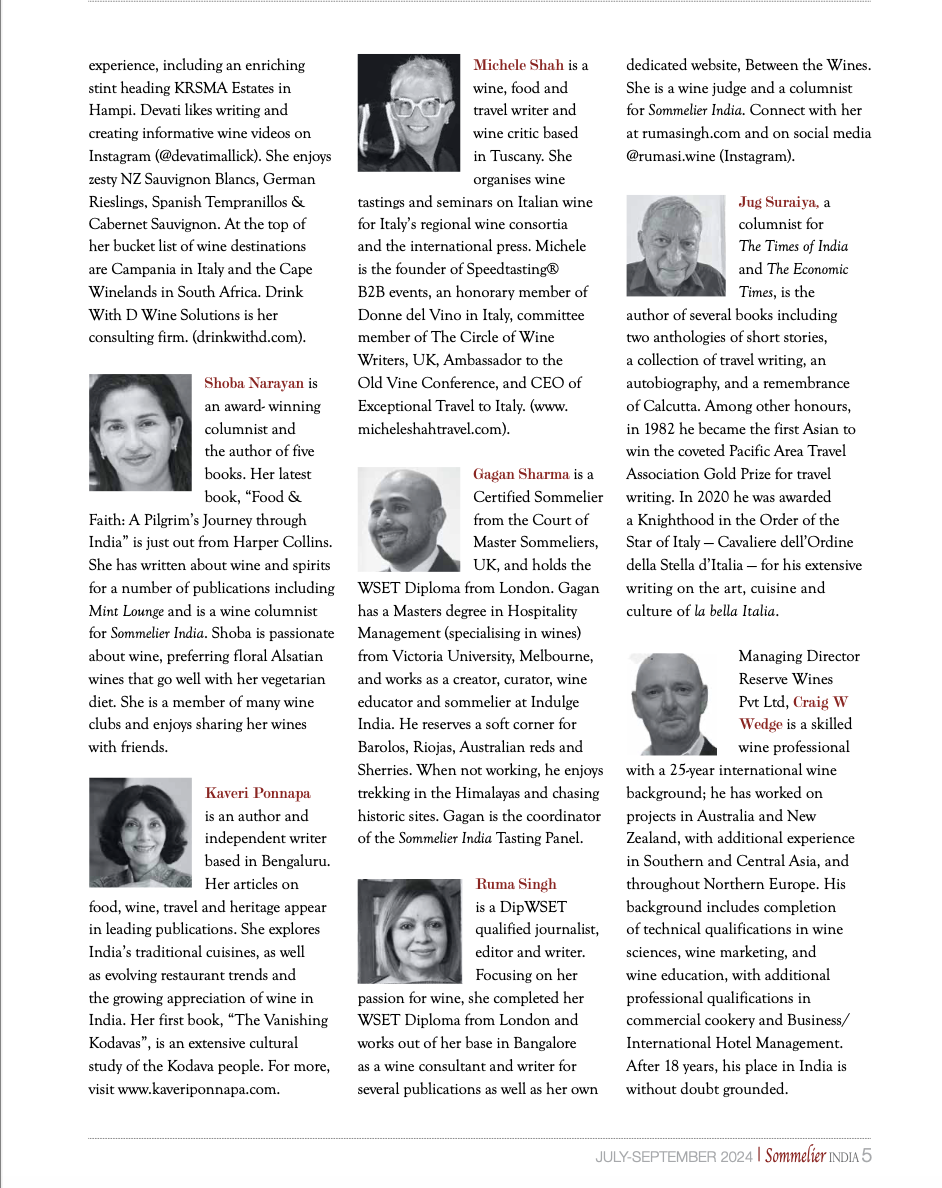
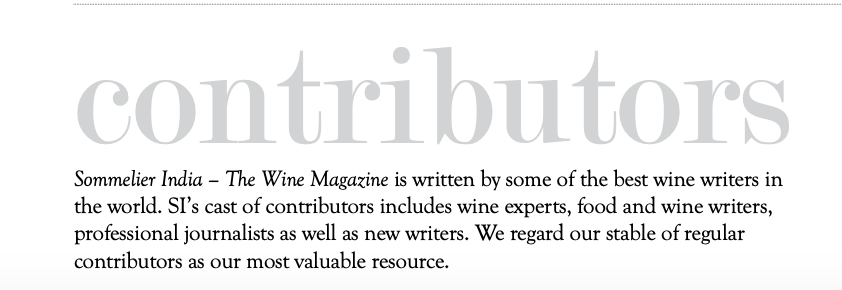




Leave A Comment